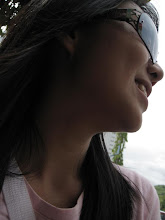Introduction
The Nairobi River Basin comprises of 3 main rivers namely Ngong, Nairobi and Mathare. Nairobi River flows through the Central Business District . It is the main river of the Nairobi River Basin, a complex of several parallel streams flowing eastwards.
The rivers join east of Nairobi and meet River Athi, eventually flowing to the Indian Ocean. The rivers are mostly narrow and highlypolluted. Currently about 56 percent of the city residents live in highly congested 46 informal and settlements with many located along the Nairobi River banks.
Challenges facing Nairobi river basin
Rapid urbanization, industrialization, poor urban planning and weak enforcement of the environmental laws leading to serious environmental degradation.• Untreated industrial effluents, raw sewage and waste from commercial activities drain into the river.• Considerable amount of solid waste is swept into Nairobi River during rain storms.• Inadequate sewerage systems leading to illegal discharges into the rivers.
Rehabilitation and Restoration of Nairobi Rivers
The Programme aims at enhancing the ecological integrity and socio-economic value of the river basin. This will be achieved through multi-faceted efforts involving all stakeholders. To achieve the aforementioned aim, the Programme interventions will focus on four key component areas which include: environmental education, awareness creation, and public communication; conservation of the riparian reserve; integrated waste management; and the restoration of Nairobi Dam.
There are three major causes of degradation of the environment in Nairobi which have been identified to be notably solid, liquid waste and sewage. Over the years, the Nairobi Rivers have come under intensive pressure from various sources of pollution, point and non-point sources. The Nairobi River system has hence acted as a major depository of waste from both domestic and industrial sources. The riparian reserves of the three Nairobi Rivers (Mathare, Ngong and Nairobi) are marked by numerous informal settlements without adequate sewerage and sanitation services. More often than not, the rivers are used for discharging raw sewage. In addition, most of the industries find it cheaper to discharge the effluents into the rivers without any satisfactory treatment.
Nairobi river before the programmed was held
Nairobi river after removal of solid waste, cleaning and tree planting
10 point strategy to rehabilitate the river
2. Stopping illegal discharges
3.Completing work of 2.5 km demostration stretch
4. Relocating economic activities and informal settlements
5. Developing and implementing an integrated solid waste management system
6. Rehabilitation of Nairobi dam
7. Repairing and installing sewerage and associated infrastructure
8.Developing a Master Plan for economic utilization of riparian zone
9. Landscaping and beautification of the riparian zone.
10. Creating awareness and assessing social impacts



No comments:
Post a Comment